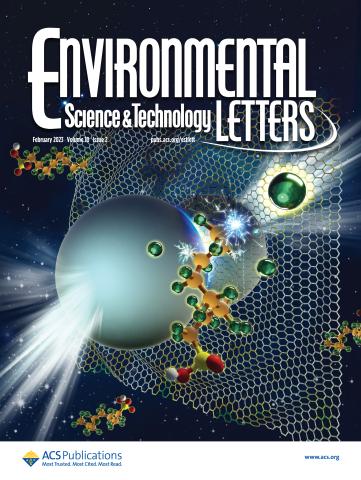Clarkson University Professor Featured in Science and Technology Magazine for Work on Destruction of Solid PFAS
Yang Yang, Clarkson Assistant Professor of Civil and Environmental Engineering, recently had an article featured in Environmental Science & Technology Letters journal which explains the development of a technology for the destruction of solid PFAS.

A research team led by Yang developed a transformative mechanocatalytic technology that can destroy PFAS chemicals and PFAS embedded in soils at room temperature and ambient pressure.
Per-and polyfluoroalkyl substances (PFAS) are synthetic chemicals that have been manufactured and used in numerous consumer products and industrial applications since the 1940s. PFAS are among the most stable chemicals ever produced. During the last two decades, increasing detection of PFAS in various environmental media has raised significant concerns about their persistence, stability, and adverse impact including toxicity to living organisms and humans.
The project team proved that when co-milling PFAS with boron nitride, an exemplary piezoelectric material, in a ball mill, where steel balls collide to provide impact, PFAS can be completely converted to fluoride as one of the final products in the absence of solvent and without heating and pressurization. The strategy is highly effective in the destruction of pure PFAS chemicals and is also successfully implemented in the remediation of PFAS-contaminated sediments.
The article was published in the latest issue of Environmental Science and Engineering Letters, a flagship environmental engineering journal. It was also prominently featured as a journal cover and has already received more than 1,000 downloads online since Jan, 2023. This transformative study was reported by the American Chemistry Society, Phys. org, AAAS, and other mainstream media, titled “Farewell to ‘forever’ – Destroying PFAS by grinding it up with a new additive.”
Student Nanyang Yang, a Civil and Environmental Engineering PhD student, and Shasha Yang, a PhD student in Clarkson’s Institute for a Sustainable Environment, are the co-first-authors of this article. Undergraduate students Claudia Beltran and Madison Morsey made significant contributions to the study. PFAS analytical support was provided by Dr. Sujan Fernando, Professor Thomas Holsen, and CAARES team. A provisional patent was filed with the support of the Shipley center.
